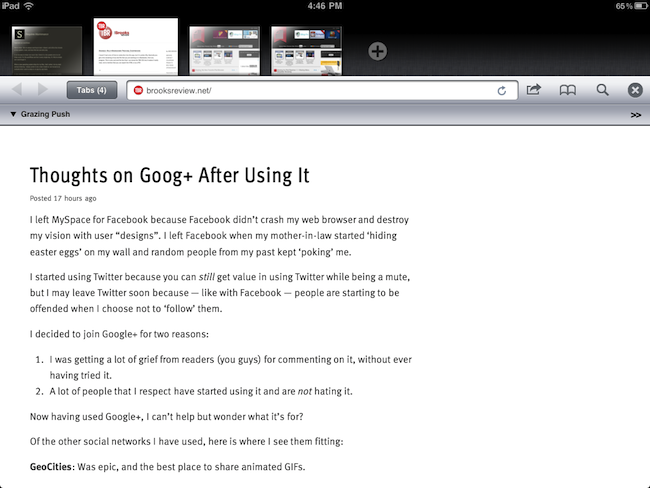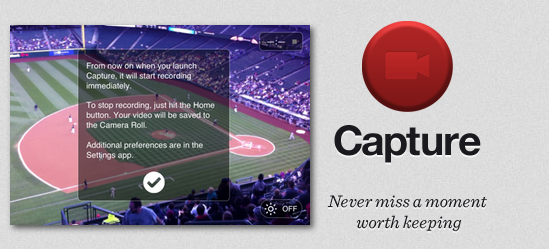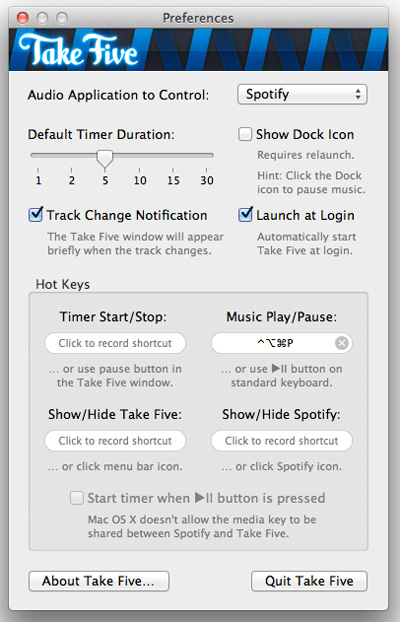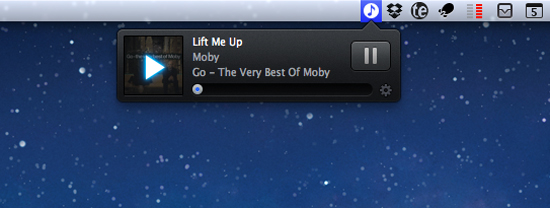Play by AOL, the latest contendant in the social music discovery and sharing space, aims at providing a streamlined solution to what could be considered a common problem among iPhone and Android users: there is no unified system to share what you’re listening to and discover new music through the songs and albums your friends are liking. Ping by Apple failed at offering a solution truly meant for mobile with quick, instant access by being nothing but a mere social layer on top of the iTunes Store; on the other hand, apps like NowPlayer could be regarded as social attempts to get the music out of your device and onto the Internet (e.g. where your friends are), yet there’s always the issue with people finding tweets about #nowplaying annoying and, most of the times, out of context. Imagine if I tweeted all day about the music I’m listening to. That wouldn’t work. So that’s why in the past months we’ve seen the rise of SoundTracking (our review), a clever utility and social network by itself that lets you quickly share what’s playing on your device and send it off to an Instagram-like stream made by people you decided to follow within the app itself. Soundtracking can send items to Twitter and Facebook, but you don’t have to, as the app can live as a network on its own. Furthermore, sharing is made simple by a button that integrates with the iOS Music app to grab what’s playing in seconds, artist’s info and album artwork included. Read more
Posts in reviews
Review: Play by AOL Aggregates Music, Lets You Share & Discover
PDF Converter for iPad Creates New PDFs Off Webpages, Contacts, Docs, More
iOS comes with a fast and elegant built-in PDF viewer (in fact, the latest JailbreakMe 3.0 is largely based upon a security hole in the PDF display engine), but unlike Mac OS X the options to convert documents into new PDF files are limited. PDF Converter, a new app by Readdle (the makers of PDF Expert and Terra web browser, among others), aims at providing an easy to use yet powerful solution to turn almost anything on your iPad (webpages, documents, clipboard contents, even photos) into new PDF documents to save locally or send to an external physical or virtual printer.
Released earlier today at $6.99 on the App Store, PDF Converter runs as an iPad-only application for now. The interface resembles Readdle’s previous works for the iPhone and iPad – namely ReaddleDocs and PDF Expert – with a narrow sidebar on the left side of the screen allowing to switch between the different types of content you can convert to PDF. The app supports PDF creation off clipboard contents, Address Book contacts, photos, webpages and just about any document that can be sent to third-party apps using iOS’ native “Open In” menu. By opening a document into PDF Converter, in fact, the app will take care of turning it into a properly formatted PDF document that keeps pagination and line breaks (as well as layout and graphics) intact, while making the doc’s text entirely selectable as you would expect from a PDF. Unlike ReaddleDocs and PDF Expert the app doesn’t come with direct iDisk and Dropbox access, but the developers recommend you use the “Open In” menu in those apps if you wish to get documents into PDF Converter.
In my tests, I’ve found PDF Converter to perform reliably with a variety of content and clipboard contents sent from iOS apps to Readdle’s utility. The built-in Address Book integration will allow you to print out contacts in a simple plain-text layout with all available fields (email, phone, address), but more importantly full clipboard integration means you’ll be able to, say, copy a web address from Safari into your system’s clipboard, launch PDF Converter and have the webpage you just visited available as a PDF you can print, email, or open into another app (you can’t rename PDF files in the current version of the app, but Readdle says that’s coming with an update soon). Furthermore, the developers have enabled a unique URI shortcut system for PDF Converter that will let you send a webpage from Safari to the app by simply adding “pdf” (without quotes) before the http:// string of a webpage, in the address bar. Change a URL to “pdfhttp://”, wait a few seconds, and the webpage will become a new document in PDF Converter. I tried this by saving MacStories’ and Brooks Review’s homepages as new docs in PDF Converter, and then I sent them off to a virtual printer on my Mac using the amazing Printopia desktop printing tool. Not only did the PDF transfer just fine, unlike other solutions to generate PDFs off webpages, PDF Converter’s engine kept the layout of both sites exactly the way I’m used to see it in Safari. For offline reading and webpage archiving (perhaps paired with Evernote on the Mac, or other apps like Yojimbo and DEVONthink), this is very useful.
At $6.99, with PDF Converter you get a powerful tool to create new PDFs on your iPad, and share them with other apps that support document interaction with iOS’ built-in features. The price may be a little steep and the app definitely isn’t for everyone – it’s a rather niche software that, however, addresses a common complaint with elegance, and good interoperability with Readdle’s other PDF app, PDF Expert. Read more
Grazing 2.0: Once Again, My Favorite iOS Browser
Back in September I first reviewed Grazing, an alternative web browser for the iPad that came out a few weeks after I complained about the average alternative browser for the iPad lacking the ideas, feature set or implementation to properly compete with Safari. Lots of things have changed since then, both with iOS Safari and the third-party development scene. Safari for iPhone and iPad got faster with the Nitro engine, received AirPlay support for any video found on the web and, with iOS 5, is also getting a major facelift with tabs on the iPad and other welcome additions such as tab undo and history right from the toolbar. On the other hand, the past few months have seen an explosion of alternative browsers that, in spite of the lack of Nitro JavaScript engine, are playing around with the craziest ideas when it comes to re-inventing web browsing on the tablet. I was impressed by the feature set of iCab Mobile (perhaps the most popular 3rd party browser for iOS), the UI of Sleipnir and the underlying concept of Portal, without a doubt the most innovative iPhone browser to date. There are dozens (if not hundreds) of alternative browsers for iOS now, and unlike last year many of them are really, really good. Apple still doesn’t allow iOS users to set a different default browser other than Safari, but third-party support has increased in the past months, so we’re starting to see integration with alternative browsers (usually iCab) in apps like Handoff and Mr. Reader.
Developers realized there could be so much more besides copying Safari and putting a sharing menu and tabs in an “alternative” browser. We have seen experiments with visual tabs, gestures, tab re-organization, and more. Is there still room for innovation? With iOS 5 bringing a slew of enhancements to Safari (including direct Twitter integration) and titles like iCab, Portal, Sleipnir, Skyfire and iChromy already available on the App Store, what’s next for third-party iOS browsers?
Grazing 2.0, a major update to the app I reviewed in September, provides an answer to this question by offering an interesting mix of features aimed at turning the app into a multitouch-enabled, platform-connected browsing experience for iOS. Read more
TV Forecast HD Is A Beautifully Refined iPad App That Keeps Track Of Your Favourite TV Shows
If you are anything like me, you probably don’t watch much live TV anymore; instead just watching a few shows a week on TV and the rest via an online catch-up service. If that sounds like you as well, you may be interested in a new iPad app that makes it easier to track when your favorite shows are airing on TV. The app, TV Forecast HD, is developed by Big Bucket Software (also the developer behind The Incident) and is an entirely redesigned version of TV Forecast, which is currently available for the iPhone. Jump the break for the full review of TV Forecast HD, which has just been made available today.
Simplify: A Spotify Music Controller and Artwork Widget for Mac
Spotify, the European music streaming service that has attracted millions of paying subscribers in the past two years, is finally launching in the United States, with some saying the big opening could happen as early as next week. For those not familiar with Spotify, the concept is very simple: instead of owning music, you stream it from the company’s servers that host a huge catalogue of songs from both major and less-known labels. You can build playlists, mark items as favorite, and pay to get unlimited access, higher quality bitrates, mobile apps and caching options for offline access. Whereas Apple’s upcoming iTunes Match service will scan songs you already own to mirror them online, Spotify lets you create your own online library of songs you don’t own (though a “buy” option has been recently introduced), but that you can stream at any time. It’s similar to other services like Rdio and MOG, but the company never managed to close a deal with US music labels and get the green light for launching its service until last week.
I’ve been a Spotify user for two years, and it’s completely revolutionized the way I listen to music. I still enjoy buying some music from iTunes, but Spotify’s biggest advantage over traditional marketplaces is that I can pay a monthly fee (or buy yearly access altogether with a gift card) to listen to just about anything I want, from any device. Spotify has a beautiful Mac client and an iPhone app that’s continually updated with new features; however, the company still hasn’t revealed its plans about an iPad app that would be much welcome one year after the iPad came out. Read more
MacStories Product Review: The Samson Meteor Mic
When it comes to podcasting, you shouldn’t have to be an audio expert like Dan Benjamin or Dave Hamilton. Audio equipment, mixers, those damn XLR cables — for someone who just wants to jump into garageband and hit record, there’s no need to buy $500 in equipment. You should, however, invest in an easy solution that’ll improve your game ten fold. Today, I’m looking at the Samson Meteor Mic, a $99 cardioid condenser microphone that’s perfect for podcasting on a budget.
Capture: The Fastest App To Record Video On Your iPhone
Released today at $0.99 on the App Store and created by the same developers of Canned, Capture is a minimal and simple utility for the iPhone that addresses a common issue with the iPhone’s Camera app: sometimes you need to capture a moment quickly, but the app takes too long to launch or switch to video recording. Brought to my attention by Ben Brooks, Capture is simply great at what it does: the developers describe it as “a record button for your home screen” and, really, that’s not too far from the truth. Capture starts recording a video as soon as you tap on its (beautiful) icon. You launch the app, and it starts recording after one second. No need to switch to the “video” tab as in Apple’s Camera, no need to wait because, and I don’t know how exactly, Capture is immediately available after you tap on it.
I can see why Capture could become an essential tool for many: by placing the app on the iPhone’s dock, you have quick access to video recording by pressing an icon. This is certainly useful for people who want to “capture” a particular moment in their kids’ life or, overall, users frustrated by the general slowness of Apple’s Camera when it comes to recording a video quickly. For reporters and citizen journalists, Capture might be exactly what they were looking for.
Capture is fast, elegant, lets you activate the iPhone’s Flash but has no support for switching between rear and front facing cameras yet. If you need an app to record video in seconds without waiting, get Capture at $0.99 on the App Store.
MacStories Product Review: The Toddy Smart Cloth
Our gadgets occasionally need a good wipe down thanks to our junk food stained fingers, and there’s nothing quite as gross as trying to watch your favorite Hulu and Netflix programming through a thin buildup of grease and fingerprints. You might not care to notice, but your iOS devices are probably filthy fingerprint magnets that you’ll rub on a pant leg or sweaty workout t-shirt just to clear away the sweaty fog. Even if it’s not about the germs, your devices deserve to shine unfiltered from any dirt or grime that’s accumulated on those glass displays. Today I’m looking at one amazing little cloth that’ll wipe away the sludge better than any towel or necktie I’ve ever used.
Take Five for Mac Updated to Give You More Control
Back in March we covered Take Five for Mac from the Iconfactory crew. The app is simple and efficient and does one thing and does it very well – stopping and restarting your music so you don’t have to remember.
Today, Take Five has been updated to version 1.1 which may sound like a minor update but in actuality is very significant. Version 1.1 brings two new and requested features; one is the ability to pause music in the following apps/services: iTunes, Ecoute, Pulsar, Radium, Rdio and Spotify. The other is that Take Five can also now pause your music without a timer by holding down the option key while clicking the pause button. The update also addresses a bug where Take Five would stop responding when used with CoverSutra.
I am a heavy Ecoute user (and future Spotify user if it ever gets service in the US) and the additional control within the new Take Five is welcome. Spotify and Rdio users will also love the 1.1 update as well as users of the other services listed. Take Five is only $3.99 in the Mac App Store, or if you’re already a Take Five user, check for updates.












